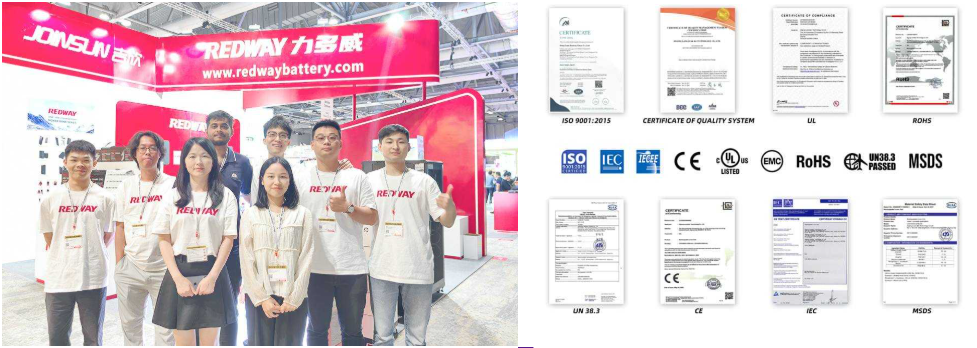When selecting a LiFePO4 battery for your RV, consider factors such as capacity, weight, temperature tolerance, cycle life, safety features, charging requirements, and maintenance needs. These elements will help ensure you choose a battery that meets your energy demands while enhancing your overall RV experience.
What Are Capacity and Energy Needs?
Understanding your energy requirements is crucial when selecting a LiFePO4 battery. Calculate your total power consumption based on the appliances you plan to use in your RV. This assessment helps determine the appropriate capacity (measured in amp-hours) needed to ensure reliable power supply during your travels.Chart: Energy Consumption Estimation
| Appliance | Wattage | Estimated Usage (Hours) | Total Watt-Hours |
|---|---|---|---|
| Refrigerator | 100 | 24 | 2400 |
| Lights | 10 | 5 | 50 |
| Water Pump | 50 | 1 | 50 |
| Total | 2500 |
How Do Weight and Size Affect Battery Selection?
Weight and size are critical factors in RV battery selection since they impact fuel efficiency and handling. LiFePO4 batteries are generally lighter than traditional lead-acid batteries, allowing for better weight distribution in your RV. Ensure that the chosen battery fits within your designated space without compromising structural integrity.Chart: Weight Comparison of Battery Types
Wholesale lithium golf cart batteries with 10-year life? Check here.
| Battery Type | Average Weight (lbs) |
|---|---|
| Lead-Acid | 60 |
| AGM | 50 |
| LiFePO4 | 30 |
What Is the Importance of Temperature Range?
LiFePO4 batteries perform optimally within specific temperature ranges (typically between 15°C and 25°C). Extreme temperatures can affect performance; high heat may lead to degradation while cold temperatures can reduce capacity. Understanding your climate conditions will help you choose a battery that can withstand environmental variations.
Know More:
Want OEM lithium forklift batteries at wholesale prices? Check here.
What Factors Should Be Considered When Selecting a LiFePO4 Battery for an RV?
How Do Different Brands (e.g., Battle Born, Renogy) Compare in Performance and Price?
What Are the Best Models of LiFePO4 RV Batteries Available in 2025?
How Does Cycle Life Impact Longevity?
Cycle life refers to the number of charge-discharge cycles a battery can undergo before its capacity significantly diminishes. LiFePO4 batteries typically offer longer cycle lives (3,000 to 5,000 cycles) compared to traditional batteries. Choosing a battery with a high cycle life ensures longevity and better value over time.Chart: Cycle Life Comparison
| Battery Type | Cycle Life |
|---|---|
| Lead-Acid | 500-1,000 cycles |
| AGM | 1,000-2,000 cycles |
| LiFePO4 | 3,000-5,000 cycles |
What Are the Safety Features of LiFePO4 Batteries?
Safety is paramount when choosing a battery for your RV. LiFePO4 batteries come equipped with built-in safety features such as thermal stability, protection against overcharging, short-circuit prevention, and robust chemical stability. These features minimize risks associated with battery failure or hazards during operation.
What Charging Requirements Should Be Considered?
When selecting a LiFePO4 battery, ensure that your charging system is compatible with lithium technology. Use chargers designed specifically for LiFePO4 batteries to prevent overcharging or damaging the cells. Understanding voltage requirements and charging profiles is essential for maintaining optimal performance.Chart: Charging Parameters
| Parameter | Recommended Values |
|---|---|
| Charging Voltage | 14.2V – 14.6V |
| Float Voltage | 13.6V |
| Discharge Cutoff Voltage | 10V |
How Do Environmental Conditions Influence Battery Performance?
Environmental conditions significantly impact battery performance; extreme temperatures can lead to reduced efficiency or accelerated degradation. When selecting a LiFePO4 battery for your RV, consider insulation options or climate control measures that can help maintain optimal operating conditions throughout your travels.
What Maintenance Practices Are Necessary?
Regular maintenance practices are essential for maximizing the lifespan of your LiFePO4 batteries. This includes monitoring state of charge regularly, ensuring connections are clean and secure, checking for any signs of wear or damage, and adhering to proper charging practices to prevent issues down the line.
Expert Views
“Selecting the right LiFePO4 battery is crucial for any RV owner,” says an expert from Redway. “Understanding factors like capacity needs and safety features can make all the difference in ensuring reliable power during your adventures.”
Conclusion
When choosing a LiFePO4 battery for your RV, consider various factors including capacity requirements, weight considerations, temperature tolerance, cycle life, safety features, charging compatibility, environmental influences, and necessary maintenance practices. By carefully evaluating these aspects, you can select a battery that enhances your travel experience while providing dependable energy solutions.
FAQ Section
- What factors should I consider when selecting a LiFePO4 battery for my RV?
Consider capacity needs based on energy consumption, weight for handling ease, temperature tolerance for climate suitability, cycle life for longevity, safety features to minimize risks, and charging compatibility with existing systems. - How does temperature affect my choice of LiFePO4 battery?
LiFePO4 batteries perform best within specific temperature ranges; extreme heat or cold can impact efficiency and lifespan. Choose batteries designed to withstand local climate conditions. - What maintenance practices are necessary for my LiFePO4 battery?
Regularly monitor state of charge levels, ensure clean connections, check for wear or damage periodically, and follow proper charging practices to maintain optimal performance.





